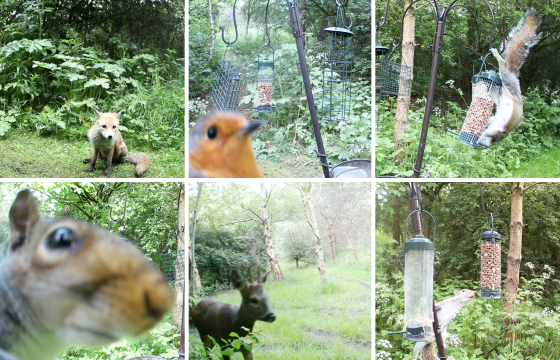Our woodland habitat restoration project continues to develop. The wildlife area is a testament to our ongoing efforts to develop a sustainable and thriving ecosystem. This summer, our woodland project has become a haven for buzzing bees, birds, foxes, deer and even a mischievous squirrel!
Which after lots of creative name suggestions, has now been named “Scrat” (like the squirrel in Ice Age).
We have placed wildlife cameras throughout our woodland area. These cameras, which we check on a weekly basis, track animal behaviours, providing valuable insights and help us discover new species in the habitat.
We have been scattering peanuts and sunflower seeds around the cameras, as well as filling our birdfeeders, in order to capture the images and videos of the wildlife we have in the woodland area. Our cameras are solar powered and capture video and photo content when movement has been detected, and for 20 seconds after.
Our thriving population of bees indicates the success of our habitat restoration project. Bees play a vital role in ecosystem health, including pollinating plants and facilitating their reproduction.
Thanks to the help of Beekeeper Ian, we have created an environment that supports bee populations.
By incorporating our bird feeders, we are supporting the local bird population. These efforts have attracted a wide variety of bird species seen on our wildlife cameras, and we aim to improve this further by adding birdhouses and birdbaths to the woodland in the future.
One of our goals for the woodland area at TT2 is to welcome school visits. We aim to encourage involvement from school kids in the our habitat restoration project and inspire sustainable living among the younger generation.
We invite suggestions to enhance and expand our woodland project. Whether it’s introducing a new plant species or creating specific habitats for certain wildlife species, we would love to hear it!
